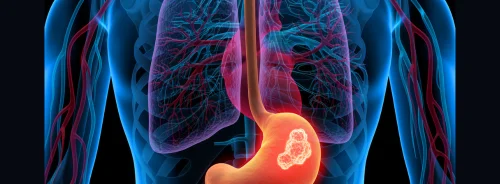Cardiovascular diseases (CVD) are the leading cause of mortality and morbidity in women worldwide. Traditional risk scores such as the Framingham score often fail to accurately assess the risk in women, leading to missed opportunities for early diagnosis and prevention. Recently, breast arterial calcifications (BAC), visible on routine mammograms, have emerged as a promising sex-specific biomarker for improving cardiovascular risk stratification in women. Despite their potential, the manual assessment of BAC poses several challenges, necessitating the development of automated methods. A recent article published in European Radiology Experimental explores the potential of deep learning (DL) approaches in BAC detection and the implications for women’s cardiovascular health.
Breast Arterial Calcifications: A Promising Biomarker
Over the past decades, BAC have been recognised as a significant biomarker for CVD risk stratification in women. BAC are medial calcium depositions detectable as parallel line opacities on approximately 13% of routine mammograms. Studies have shown that BAC are associated with an elevated hazard of CVD, independent of conventional risk factors such as smoking. For instance, a retrospective study by Margolies et al. found a strong quantitative association between BAC and coronary artery disease, with a BAC score ranging from 4 to 12 indicating a marked BAC burden and an adjusted odds ratio of 3.2 for the presence of coronary artery calcium.
Further, a meta-analysis revealed that mild BAC had a pooled odds ratio (OR) for coronary artery disease ranging from 1.08 to 2.04, while moderate to severe BAC showed a pooled OR ranging from 2.95 to 4.83. However, the MINERVA study did not observe a quantitative association between BAC burden and hard atherosclerotic CVD events but identified a threshold effect for global CVD in women over the 95th percentile of BAC. With the increasing use of mammography for breast cancer screening, BAC presents an opportunity for CVD risk stratification in asymptomatic women.
Challenges in BAC Assessment
Despite the promise of BAC as a biomarker, their assessment remains challenging. Manual evaluation of BAC is a time-consuming task that is susceptible to intra- and inter-observer variability. The diversity in BAC appearance and the lack of a standard reporting guideline further complicate their adoption as a reliable imaging biomarker in clinical practice. Automated methods using artificial intelligence (AI) have been recommended to overcome these limitations. Deep learning (DL)-based approaches, in particular, offer the potential to improve reproducibility and reduce the workload on radiologists.
A twelve-layer deep convolutional neural network (CNN) was the first DL model developed for BAC detection, showing comparable performance to human experts. Subsequent studies explored modified versions of U-Net for segmenting calcified vessels, achieving higher accuracy levels. However, these supervised learning models require large-scale images with manual segmentation-level annotations, which can introduce biases related to human assessment variability. Techniques such as transfer learning from pre-trained CNNs can mitigate these issues by leveraging existing knowledge to enhance model performance.
Advances in Automated BAC Detection
Recent advancements in automated BAC detection have focused on utilising transfer learning and weakly supervised frameworks to reduce operator dependency. A novel study proposed a transfer learning-based weakly supervised framework that formulated BAC detection as a binary classification task requiring only image-level annotations. This approach significantly reduced the need for time-consuming pixel-by-pixel ground truth annotations. The study demonstrated promising results using a pre-trained VGG16 classification model fine-tuned on mammographic datasets, highlighting the potential of transfer learning in BAC recognition.
Further research compared the performance of different neural network architectures using deep transfer learning strategies to identify the best models for discriminating mammograms with and without BAC. The study involved 1,493 screening mammography exams, with the dataset split into training, validation, and testing subsets. The training images were under-sampled to balance the dataset, while the validation and testing subsets preserved real-world BAC prevalence. The preprocessing steps included breast region extraction, image rescaling, and intensity normalisation to enhance training convergence.
The study evaluated eleven deep neural networks, including Xception, VGG16, VGG19, ResNet50V2, ResNet101V2, ResNet152V2, MobileNet, MobileNetV2, DenseNet121, DenseNet169, and DenseNet201. The models were pre-trained on the ImageNet dataset and fine-tuned for the BAC classification task. Performance was assessed using the receiver operating characteristic curve (ROC) and area under the curve (AUC), with VGG16, MobileNet, and DenseNet201 showing the best performance. Qualitative evaluation using Grad-CAM++ heatmaps provided visual explanations of the CNN models’ decisions, highlighting the potential for integrating human expertise into the decision-making process.
Integrating AI and deep learning approaches in BAC detection holds great promise for improving cardiovascular risk stratification in women. Networks like VGG16 and MobileNet have demonstrated superior performance in BAC detection, highlighting the potential of relatively shallow models in clinical settings. Transfer learning and weakly supervised frameworks can reduce operator dependency and enhance model accuracy. Further research is needed to optimise neural network configurations, validate models on larger and diverse populations, and integrate these tools into clinical practice. As the field evolves, balancing diagnostic accuracy, computational efficiency, and real-world applicability will be crucial for advancing women's cardiovascular health. The widespread adoption of automated BAC detection could also serve as a new motivation for participation in mammography screening programmes, reinforcing their value in both cardiovascular and breast cancer prevention.
Source: European Radiology Experimental
Image Credit: iStock






